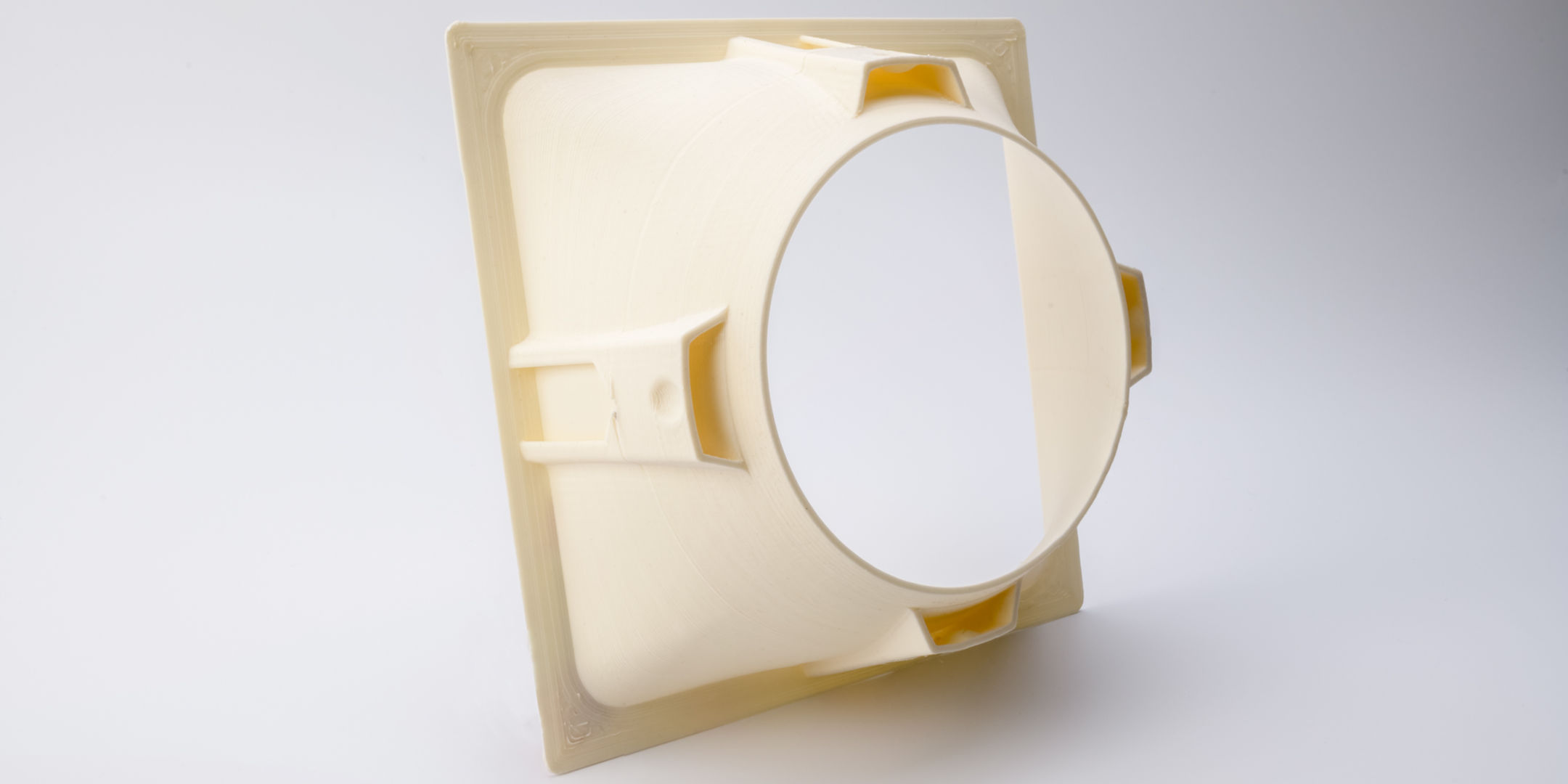Flame-retardant materials are vital in some 3D printing applications. They’re more thermally stable than other materials, which means the likelihood of ignition or burning is reduced.
These materials are ideal for end-use parts, replacement parts, tools, or fixtures where combustion may occur. There’s a wide range to choose from, with each offering specific benefits.
Why are flame-retardant materials important?
In some working environments, fire is a risk. Flame-retardant materials help prevent fires, or limit their spread. This gives workers valuable extra time to ensure their safety. The use of flame-retardant materials is sometimes mandatory, in order to comply with safety standards.
Common uses of flame-retardant materials
Flame-retardants are used in several different ways.
They play a key role in 3D printed electronics, ensuring that the end-products meet fire safety standards. Good examples are wires and cables, which are coated in flame-retardant plastic.
The transportation industry also relies on fire-retardant materials. 3D printed parts for airplanes, cars, and trains ensure that companies are fully compliant with safety regulations. Likewise, the construction sector uses flame-retardant materials in homes, offices, and public buildings.
What else should you know?
The difference between flame-retardant and flame-resistant materials
Flame-resistant materials are designed to resist burning and withstand heat. Flame-retardant materials have a different purpose – preventing fires from starting, and limiting their spread.
Base materials
Common base materials for flame-retardancy include engineering grade thermoplastics like PA, ABS, PC, and some TPUs. PC-ABS is suitable for electronics. Some 3D printing filaments already possess flame-retardant properties themselves, such as PPS and PVDF.
Additives for flame-retardancy
Some materials are inherently flame-resistant. However, thermally stable polymers might limit print performance, and they’re also costly and difficult to process. This is why manufacturers incorporate flame retardant additives to materials, as they slow the rate of combustion, reduce smoke, and limit dripping.
Certification
Flame-retardancy is certified via UL 94, the Standard for Safety of Flammability of Plastic Materials for Parts in Devices and Appliances testing. This flammability standard was released by Underwriters Laboratories in the US.
The certifications are (from least to most flame-retardant):
HB: slow burning on a horizontal specimen; burning rate < 76 mm/min for thickness < 3 mm or burning stops before 100 mm
V-2: burning stops within 30 seconds on a vertical specimen; drips of flaming particles are allowed
V-1: burning stops within 30 seconds on a vertical specimen; drips of particles allowed as long as they are not inflamed
V-0: burning stops within 10 seconds on a vertical specimen; drips of particles allowed as long as they are not inflamed
5VB: burning stops within 60 seconds on a vertical specimen; no drips allowed; plaque specimens may develop a hole
5VA: burning stops within 60 seconds on a vertical specimen; no drips allowed; plaque specimens may not develop a hole
What’s important when printing with flame-retardant materials
The print process can affect the performance of the flame-retardant additive. However, the same can also be said of the design of the printed product – for example, thickness can also have impact. As such, our material partners provide pre-configured printing profiles and settings for use with Ultimaker 3D printers.
Practical considerations
Additives can be abrasive and damage the nozzle. To minimize abrasion, use a hardened metal or ruby nozzle instead.
Most flame-retardant materials need to be dried before use
To ensure the filament melts properly, make sure the minimum amount of air is incorporated into the print
Our material partners
This section provides details about Ultimaker’s flame-retardant material partners. You can learn more on the Ultimaker Marketplace.
A light housing printed in DSM Novamid ID1030 FR (F)
DSM
DSM Novamid® AM1030 FR (F) is the first-ever UL Blue Card-certified PA6/66 filament on the market and is valid for the Ultimaker S5. It is an environmentally friendly, sustainable solution for applications requiring flame retardancy.
“Failure to meet flammability testing requirements is not only a considerable risk to public safety, but it also restricts market access and can lead to enforcement actions by regulatory authorities,” Danielle Glasbergen-Benning, Application Development Specialist Sports & Lifestyle at DSM Additive Manufacturing, said.
Arkema
Arkema FluorX™ is a tough, semi-crystalline fluoropolymer made from Arkema’s Kynar® PVDF. It is formulated for printability, and is a great option for parts subjected to demanding conditions, such as solvents, acids, fire, and UV radiation.
“Flame-retardancy is important because the best utilization of 3D printing is in real world parts, not prototypes. Someone who wants to replace a traditionally manufactured part with a 3D printed one does not want to sacrifice any properties,” Steve Serpe, Market Manager, Specialty Powders and 3D Printing at Arkema, said. “So if an application requires flame retardancy they must choose a filament which will provide adequate performance.”
Solvay
Solvay Solef® PVDF AM Filament is a tailor-made fluorinated semi-crystalline additive manufacturing material for best printing results of parts that need chemical resistance, high thermal and environmental stability, and good mechanical properties.
“The benefit of a flame-retardant material is twofold: Firstly in regards to 3D printing being a plastic transformation process itself where a flame-resistant material can beneficial from a safety standpoint. Secondly, due to the requirements of applications that can be found in the oil and gas, aerospace, or rail transportation industry,” Sophia Song, Business Incubation - Additive Manufacturing at Solvay, said.
Lehvoss
Lehvoss LUVOCOM 3F PAHT® KK 50056 is optimized for FFF 3D printing. The inclusion of ceramic fillers means it performs well in high-temperature environments, as the fillers boost the thermal stability without adversely affecting the processing process.
“It offers a similar mechanical performance to a PA6, but exhibits lower water absorption and higher temperature resistance. With its employed halogen free flame-retardant package, UL-94 VO is achieved on printed parts, at thicknesses ≥0.4mm. Being an electrical insulator, this material is an ideal candidate for the E&E market, and all other applications where flame retardancy is important.” said Thomas Collet, Head of 3D Printing Materials at LEHVOSS Group.
Clariant
Clariant PA6/66-GF20 Flame Retardant Using Exolit® is a UL-certified, halogen-free, flame-retardant material that is strong, tough, and has good temperature properties.

















